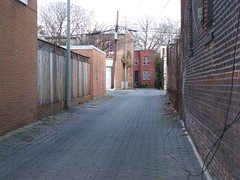Planning and Quality of Life
(and master planning and scopes of work).
I mention from time to time that I think that:
1. rational planning methods and public participation processes tend to be pretty static;
2. Constrained by departments/silos;
3. with tightly defined scopes of work;
4. that often fail to allow for much creativity;
5. could be improved by punching things up with the "design method";
6. and often occur without adequate consideration of allied government institutions and planning processes.
E.g., my joke that DC doesn't have an "office of planning" but an "office of land use" because planning processes by other departments such as schools, libraries, the Deputy Mayor's Office for Planning and Economic Development, parks, etc., don't seem to be coordinated, and oftentimes don't involve the Office of Planning all that much.
If DC is to have a Planning Commission, a big issue with some advocacy groups, then this Commission ought to have purview over all DC Government agency planning initiatives.
And it should start with a capital improvements and investment plan (one doesn't exist), the Comprehensive Plan, the someday to be released Transportation Plan, the Libraries Plan, the Parks Plan, the K-12 Education Plan, and the Postsecondary Education Plan (one doesn't exist).
Anyway, if planning started with really thinking through what I think planning and zoning should be about -- enhancing the livability and quality of life within the city, as well as building a strong economy -- then planning efforts would be somewhat different.
And presumably they could be more creative.
For example, there is a big problem with the pedestrian master plan to my way of thinking. It doesn't focus on road materials.
The biggest threat to walkers is fast drivers.
As long as roads are constructed of materials that allow for high speeds much greater than posted limits, there will always be a disconnect between policies and reality.
The Infrastructure Project Management Administration (IPMA) of DDOT wants to spend as little money as possible on infrastructure. I don't mean that so negatively. They want to limit expense. In public administration, this is called "satisficing" a combination of the words satisfy and suffice.
But Belgian Block as roadway materials in neighborhoods would be a significant improvement as it would provide visual, physical, and auditory clues to drive more slowly. It still exists here and there in DC, such as on North Carolina Avenue SE between 9th and 11th Streets (I think).

Belgian block alley on Capitol Hill.
IPMA asks for a 25 year useful life when they construct a project. Sure Belgian Block costs more, but it probably lasts 80 years...
Road materials and related issues aren't covered at all in the Pedestrian Master Plan.
Plus, I think a number of the "priority corridors" studied in the plan don't make sense as they aren't neighborhood-based or are lightly used by people (Bladensburg Road in Ward 5, or M Street SE and SW in Ward 6).
And I have been thinking that even the separate District Retail Action Strategy planning process by the Office of Planning is in part about improving the walking environment and neighborhoods by augmenting the success of retail "activity destinations" within neighborhoods.
I think that there should always be provisions in planning studies for expanding the scope and purview so that the opportunity for creative ideas, problem-solving, and solution generation isn't lost.
Labels: sustainable land use and resource planning, urban design/placemaking



0 Comments:
Post a Comment
<< Home